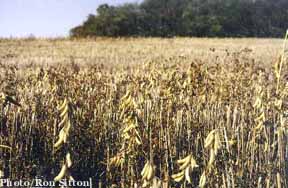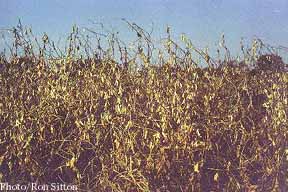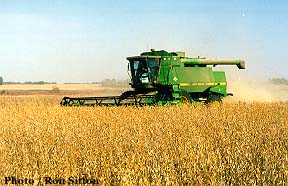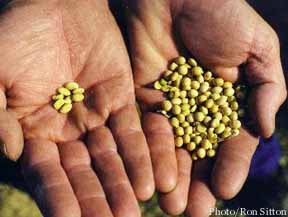Drought and the Family Farm By Julie Gause An extreme drought coupled with depressed prices has caused a major disaster in farming communities throughout many Southern states. Three of the states most seriously affected by the drought — Tennessee, Kentucky and Virginia — suffered some of the worst conditions experienced in the past three decades.
According to the National Climatic Data Center (NCDC), all of Tennessee and Kentucky experienced extreme drought conditions (minus 3.00 inches and more below normal) from July through September 1999. The Virginia state office of the Farm Bureau Federation reports even though recent hurricanes have returned moisture to the region, Virginia's crops remain in disastrous shape because of its dry summer. According to the Memphis office of the National Weather Service, total rainfall amounts during the crucial months of July and August fell short of normal by approximately 4.83 inches. Keeney said rainfall totals in Kentucky remained at least 10 inches below normal, despite the rain received in recent weeks. In the north-central counties of Virginia, springs, ponds and wells remain dry even after many inches of hurricane rain, said Pete Martens, a Virginia Tech extension agent in Rockingham County. "Technically, Virginia is still in both a hydrological and an agricultural drought," said Patrick Michaels, state climatologist. "Springs will take a while to come back; it could take a year or more." Tim Roberts, a UT extension agent, said Tennessee's crops looked great, even above average, until the end of July. When the dry weather continued into August, the farmers knew trouble lay ahead. The condition of the crops started to deteriorate toward the end of August, and now things appear hopeless, he said.
"As far as feeling better and looking better, yes (the rain did help). Crop wise it's too late for all that," he said. Low market prices for their harvest adds to the problems faced by all farmers. The Farm Bureau Federation tracks issues concerning American farmers. Stefan Maupin, assistant director of public affairs and research for the Tennessee Farm Bureau state office, said a couple of factors drove prices down. The first concerns the location of the drought. In the major production states of the Midwest and the Plains, farmers project a record-setting harvest, such as the corn crop in Iowa. This over-abundance of product more than compensates for the low yields in Tennessee, Kentucky, Virginia and other states affected by the drought.
None of this news bodes well for the American family farm. "I've farmed for 45 years, and I've never seen farmers hurting as bad," said Jack Duer, a vegetable buyer in Northampton County, Va. After hearing appeals for assistance from farmers, elected officials from Tennessee, Kentucky and Virginia, along with representatives from other states, appealed to Washington for federal disaster aid. Maupin said two programs exist to grant relief from weather-related disasters. In September, U.S. Agriculture Secretary Dan Glickman granted all 95 counties in Tennessee disaster status, and since July he has also granted that status to areas of Connecticut, Kentucky, Maryland, Massachusetts, Missouri, Montana, New Hampshire, New York, Ohio, Pennsylvania, Rhode Island, Texas, Vermont, Virginia and West Virginia. To date Kentucky and Virginia farmers have received Emergency Conservation Program allocations of over $1.2 million and $2.9 million respectively, according to the United States Department of Agriculture (USDA).
The government designed these programs to help preserve the small farms of America, but without improved prices and trade-relations, the farms remain in very real danger, Maupin said. Some farmland preservation movements are picking up speed, but their design helps to protect the land from development and not necessarily to keep it in the hands of small farmers. Sometimes a business only profits when operated on a certain scale, and farming in the 21st century may be in that category, he said. Land-grant universities, like UT, UK and Virginia Tech, offer extension services through their agricultural departments. Extension offices in each of the state's counties offer programs designed to help farmers through rough times. Extension Agent Gordon said his office offers financial services to farmers that help them plan for next year. They enter numbers into a computer to decide what to spend for next year's crop, including the amount of money to spend on equipment, seed, fertilizer and chemicals.
Gordon said his office also provides referrals to counseling services to combat depression for those who seek help. Unfortunately, farmers are by nature a proud group and not likely to seek help unless the circumstances are dire. Roberts summarized the plight of Tennessee's farmers, as well as those in other drought stricken states: "We can't take many more years like this." Julie Gause is a free-lance writer from Knoxville who's involved in Web editorial content at HGTV. The Tennessee, Virginia and Kentucky offices of the Farm Bureau Federation, as well as the University of Kentucky's College of Agriculture, contributed to this article.
Copyright © The Southerner 1999.  |




















